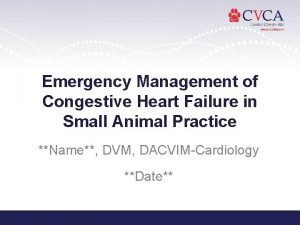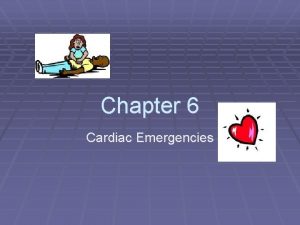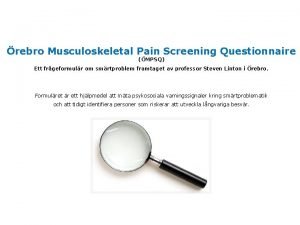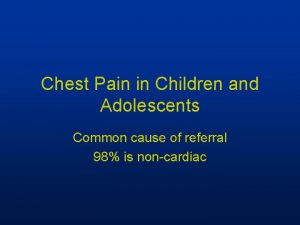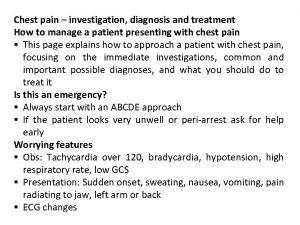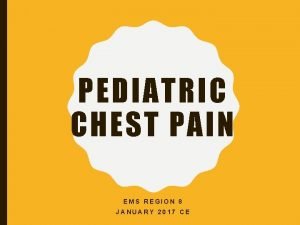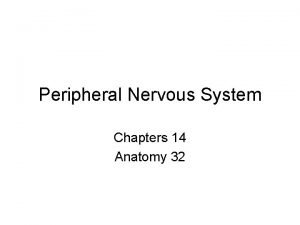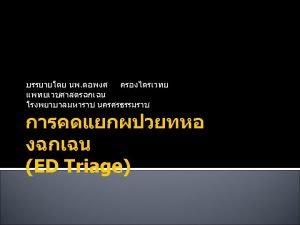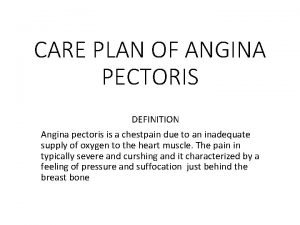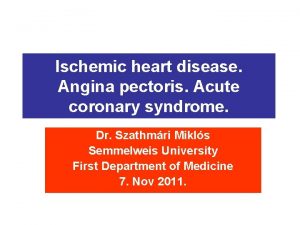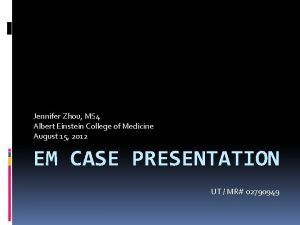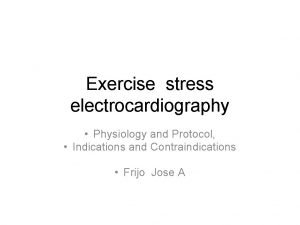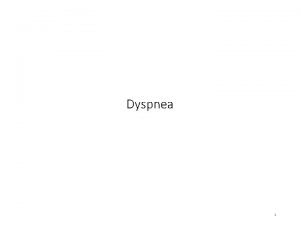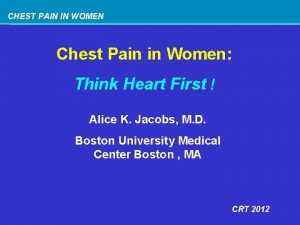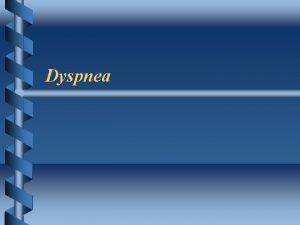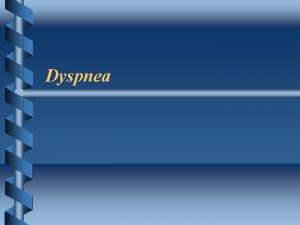Cardiopulmonary Emergencies Cardiac Compromise Chest pain Dyspnea Anxious












- Slides: 12

Cardiopulmonary Emergencies

Cardiac Compromise Chest pain Dyspnea Anxious Nausea Abdominal pain Sweating Abnormal HR and RR

Abnormal HR Bradycardia – Slower than 60 BPM Tachycardia – Faster than 100 BPM Palpitations – Irregular or rapid heart beats that cause fluttering in the chest

Patient Care Place pt in position of comfort High-concentration O 2 Transport IMMEDIATELY if: – No hx of cardiac problems, does not have nitroglycerin, or systolic BP < 90 Nitroglycerin Repeat if needed Aspirin? ?

Common Causes Coronary Artery Disease Aneurysm Angina Pectoris Congestive Heart Failure Acute Myocardial Infarction

Cardiac Arrest 1 -2% of calls Chain of Survival: – Early access – Early CPR – Early defibrillation – Early advanced care

Adult CPR Head tilt-chin lift Check breathing and give 2 breaths Check carotid pulse Compressions – Hands 2 fingers above the ziphoid process – 1. 5 – 2 inches depth – 100/minute – Ratio 30: 2

Child CPR Between 1 year and puberty Open airway, assess, and give breaths Carotid pulse < 60 Compressions – May use 1 hand for small victims – 1/3 to 1/2 depth of chest – 100/minute – 30: 2 (1 -rescuer) 15: 2 (2 -rescuer)

Infant CPR Less than 1 year old Open airway, assess, and give breaths Check brachial pulse < 60 bpm Compressions – Place 2 fingers below nipple line – 1/3 to 1/2 depth of chest – 100/minute – 30: 2 (1 -rescuer) 15: 2 (2 -rescuer)

AEDs Verify cardiac arrest Start CPR Turn on AED Apply AED and clear pt Press analyze

Shock Indicated Deliver 1 shock Perform 2 minutes of CPR Press analyze Deliver 1 more shock After 3 shocks prepare for transport

No Shock Indicated Perform CPR for 2 minutes Press analyze
 Cardiac vs pulmonary dyspnea
Cardiac vs pulmonary dyspnea Lesson 6: cardiac emergencies and using an aed
Lesson 6: cardiac emergencies and using an aed örebro musculoskeletal pain screening questionnaire
örebro musculoskeletal pain screening questionnaire Chest pain in pediatrics
Chest pain in pediatrics Retrosternal chest pain
Retrosternal chest pain Stabbing pain in chest
Stabbing pain in chest Visceral referral patterns
Visceral referral patterns Chest pain triage
Chest pain triage Nursing diagnosis of angina pectoris
Nursing diagnosis of angina pectoris Typical chest pain
Typical chest pain Afebrile vss
Afebrile vss Causes chest pain
Causes chest pain Typical chest pain
Typical chest pain
